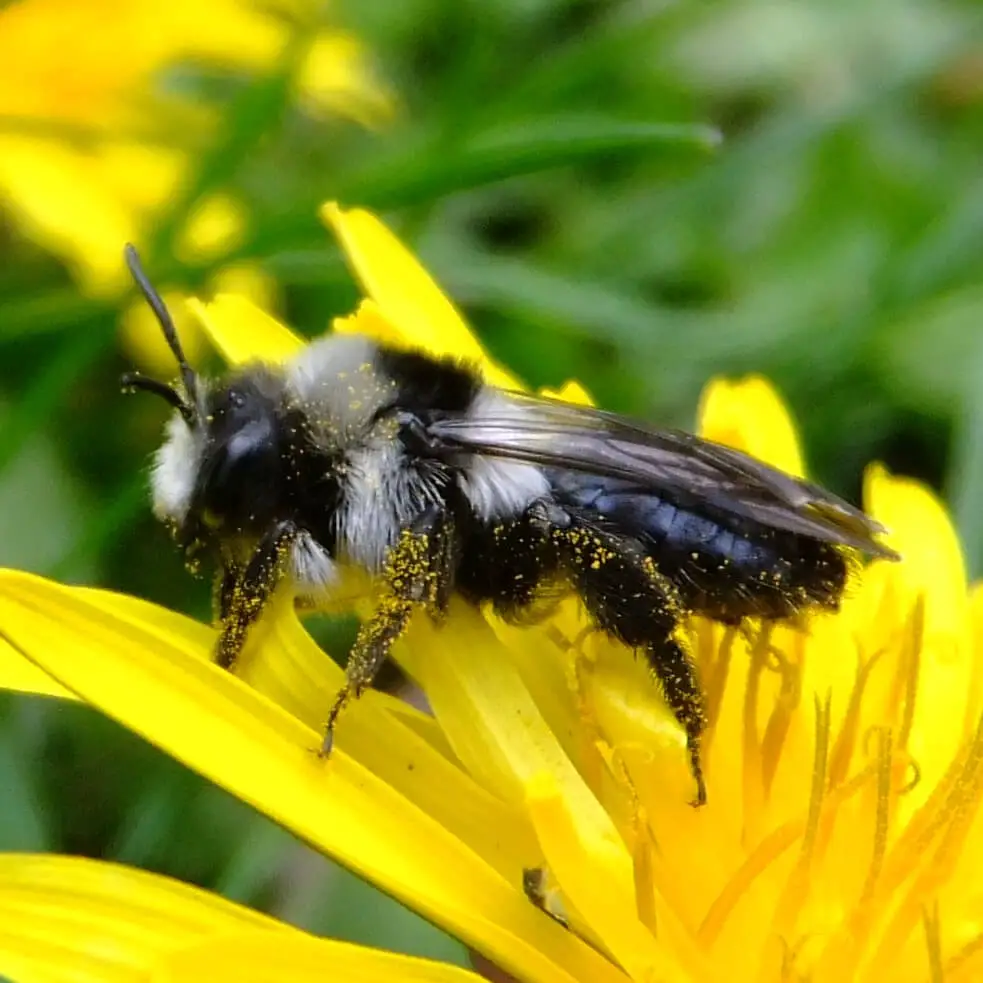Ah, the Ashy Mining Bee, or Andrena Cineraria as it’s known in the scientific community. This bee is a stunner, with its smoky-grey hairs and contrasting orange legs. But there’s more to this bee than just its good looks. Let’s dig deeper into the life and times of the Ashy Mining Bee.
Appearance: A Smoky Beauty
First impressions matter, and the Ashy Mining Bee knows how to make one:
- Colour: They sport a coat of ashy-grey hairs, giving them their name.
- Contrast: Their legs are a striking orange, creating a beautiful contrast.
- Size: Adult Ashy Mining Bees are about 10mm long, making them medium-sized as far as bees go.
Habitat: Home Sweet Home
If you’re keen on spotting these beauties, here’s where you should look:
- Geographical Spread: They are found across Europe, including the UK.
- Preferred Habitats: Think sunny, open spaces. Gardens, meadows, and even urban parks can be their home.
Behaviour: The Life of a Miner
This bee has some interesting quirks that make it unique:
- Solitary Nature: These are solitary bees, meaning each female digs her own nest.
- Nesting: They prefer sandy or loose soils for their nests, which can go up to 60cm deep!
- Social Structure: Unlike honeybees, they don’t have a queen or workers. Every female is fertile and digs her own nest.
Diet: A Flower Fanatic
- Pollen and Nectar: They feed on a variety of flowers but are particularly fond of dandelions and fruit blossoms.
- Foraging: They are diligent foragers, often seen buzzing from flower to flower in search of the best nectar.
When to Spot Them: Timing is Everything
- Time of Year: Spring is the best time to see them, particularly from April to June.
- Time of Day: They are most active during warm, sunny days.
| Best Time to Spot | Location | Activity Level |
|---|---|---|
| Late Morning | Meadows | High |
| Early Afternoon | Gardens | Moderate |
| Late Afternoon | Urban Parks | Low |
Conservation: How Are They Doing?
- Population Status: They are not considered endangered but are affected by habitat loss.
- Conservation Efforts: Planting more wildflowers and reducing pesticide use can help their numbers grow.
Why They Matter
- Pollination: They are excellent pollinators, especially for fruit trees.
- Soil Aeration: Their nesting behaviour helps in soil aeration, benefiting other plants and even gardeners!
Conclusion
The Ashy Mining Bee is not just another pretty face in the bee world. Its unique behaviours and roles in the ecosystem make it a fascinating subject for anyone interested in bees or nature in general. So, the next time you’re out on a sunny day, keep an eye out for this ashy beauty. You’ll be glad you did.
For more information on identifying the Ashy Mining Bee and other bee species, don’t forget to check out our Bee ID page.
So, are you ready to spot an Ashy Mining Bee this spring? Grab your camera and happy bee-watching!




